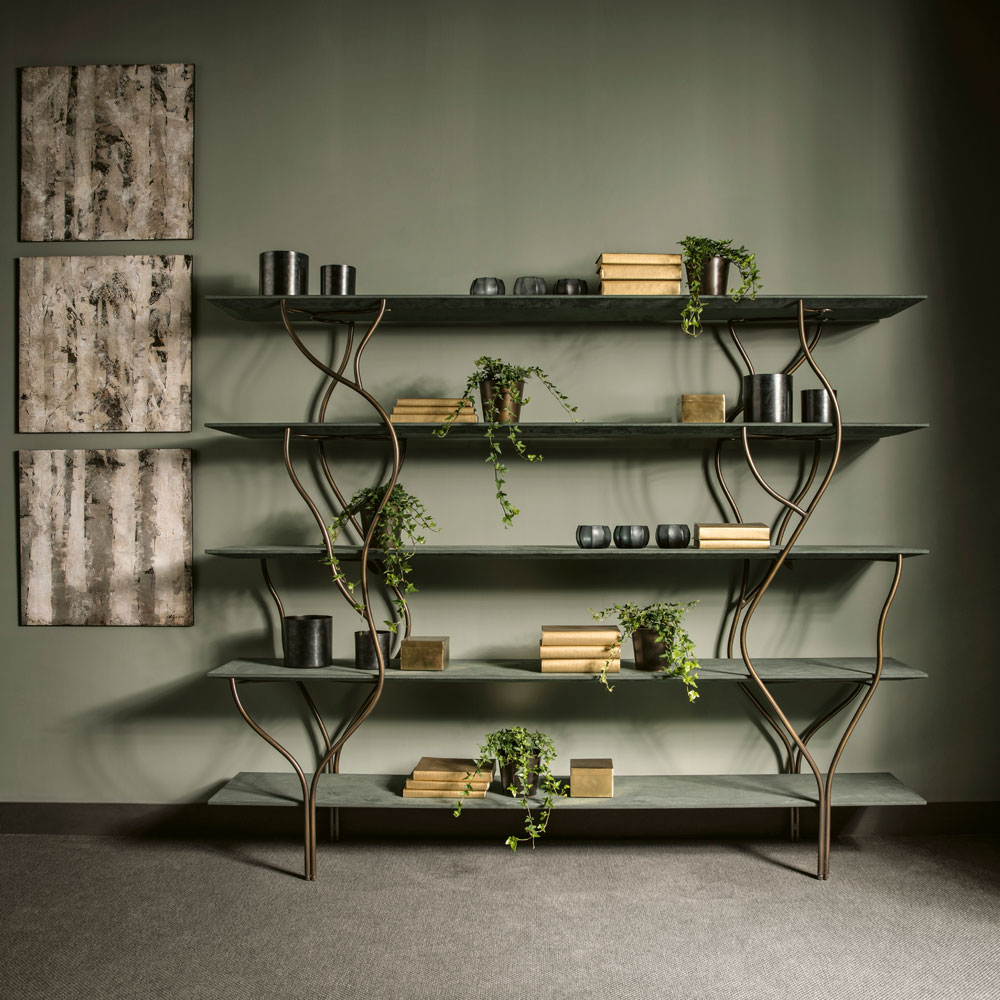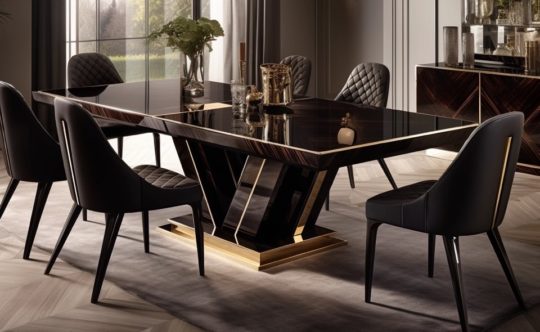
There are many reasons why biophilic design has become so popular in recent years. Perhaps the most important, however, is the positive impact it can have on our health and wellbeing. Studies show that being amongst nature can reduce stress, improve mood, and even boost cognitive function. This makes furniture inspired by nature and natural forms a particularly great choice for offices, as well as spaces used for relaxing, including bedrooms and living areas. In this blog post, we are going to explore biophilic design and its three key principles.
-
 Luxury White Marble Coffee Table£5,745.00 – £6,010.00
Luxury White Marble Coffee Table£5,745.00 – £6,010.00 -
 Modern Curved Sofa£11,280.00
Modern Curved Sofa£11,280.00
What is Biophilic Design?
Biophilic design is a concept that allows us to feel connected with nature in a modern, built environment. It is a relatively new idea which continues to gain momentum – particularly as our focus turns towards sustainability. Coined in the 1980s, the term ‘biophilia’ refers to the innate human tendency to feel akin to the living world. Rather simply, biophilic design aims to bridge outdoor and indoor spaces by letting the former into the latter. This is not only achieved architecturally, but also by incorporating organic elements – both directly and indirectly – into an interior.
1. Nature in the Space
The first, and maybe most accessible biophilic design principle is, quite literally, bringing nature inside. This can be directly, through houseplants, natural light or water, or indirectly, with organic materials like wood, metal or stone. Organic materials are extremely versatile, often available in a range of colours, textures and finishes. And while polished surfaces work wonders for reflecting and optimising natural light, a brushed or patinated effect can make a piece of furniture feel as if it has grown straight from the earth. At Juliettes Interiors, all of our luxury furniture designs are completely customisable, allowing you to choose the sizes, materials and finishes to fit your space.
-
 Large Modern Art Deco Style Bookcase£11,560.00
Large Modern Art Deco Style Bookcase£11,560.00 -
 Exclusive Modern Precious Stone Dining Table£38,819.00
Exclusive Modern Precious Stone Dining Table£38,819.00 -
 Exclusive Stone Console Table£20,718.00
Exclusive Stone Console Table£20,718.00 -
 Contemporary Italian Natural Onyx Square Chandelier£4,699.00 – £16,742.00
Contemporary Italian Natural Onyx Square Chandelier£4,699.00 – £16,742.00
2. Natural Shapes and Forms
Curves, organic shapes, patterns and textures are also excellent for introducing nature into the home. Curves come in all kinds of natural forms, from meandering rivers to the boughs of great trees. When it comes to interior spaces, they help to create a sense of movement and flow, as well as soften any harsh, man made edges. Organic shapes are irregular and asymmetrical, mimicking nature’s perfect imperfectness. In design, these are often inspired by leaves, rock formations or pebbles, and help to balance more angular features. What’s more, the addition of patterns and textures found in nature can also bring harmony to a built environment. And things like animal prints, honeycomb structures and even bark or wood grains are common characteristics of biophilic design.
-
 Modern Italian Marble Dining Set£22,840.00
Modern Italian Marble Dining Set£22,840.00 -
 Opulent Brown Maple Veneer Bed£6,862.00 – £7,166.00
Opulent Brown Maple Veneer Bed£6,862.00 – £7,166.00 -
 Contemporary Coffee Table Trio£3,365.00 – £14,353.00
Contemporary Coffee Table Trio£3,365.00 – £14,353.00 -
 Exclusive Contemporary Italian Abstract Wall Mirror£9,828.00
Exclusive Contemporary Italian Abstract Wall Mirror£9,828.00
3. Prospect and Refuge
Though it’s important to create a feeling of openness and expansiveness with biophilic design, the space must also feel safe and secure. Spaces that provide both prospect and refuge are more likely to improve wellbeing and comfort. For our entire existence as humans, we have lived in close proximity to nature. Therefore, it makes sense that we would associate a more organic setting with the ability to survive, thrive and flourish. Even as we find ourselves living in more complex, built-up environments, we still share an instinctive bond with nature that affects how we respond to our surroundings. In biophilic design, the prospect-refuge theory observes how we prefer to position ourselves at an edge, looking in towards the centre of a space. Our backs are protected and we are able to observe all that is happening.
One of the most effective ways to adopt this principle is to position your sofa near a window, with long, uninterrupted, or elevated views. In the bedroom, placing your bed against the wall facing the door will have a similar impact. In terms of refuge, you might have a smaller, “snug” setting, separated-off from a more open or spacious area. High-backed, encompassing armchairs are also ideal for generating a heightened sense of security.
-
 Contemporary Leather Upholstered Curved Bed£13,750.00 – £14,100.00
Contemporary Leather Upholstered Curved Bed£13,750.00 – £14,100.00 -
 Retro Style Modular Corner Sofa£57,633.00
Retro Style Modular Corner Sofa£57,633.00
Blurring the Lines
In conclusion, biophilic design is an innovative approach to creating spaces that blur the lines between interior and exterior environments. Its principles are based on the innate relationship we have with nature, and bringing it into our homes can improve our lives. By combining instinctive behaviour with natural elements, we can carve-out spaces that are both beautiful and functional, helping us to feel more connected to the living world. If you’d like to incorporate more nature into your home, click here to learn about our luxury interior design service.
We’re Here to Help
If you need help choosing your luxury furniture, our design team is always on hand. For advice on sizes, colours, fabrics and finishes, or to design the perfect space for you, contact us. Alternatively, you can pop into our Chelsea showroom – we would love to meet you.
















